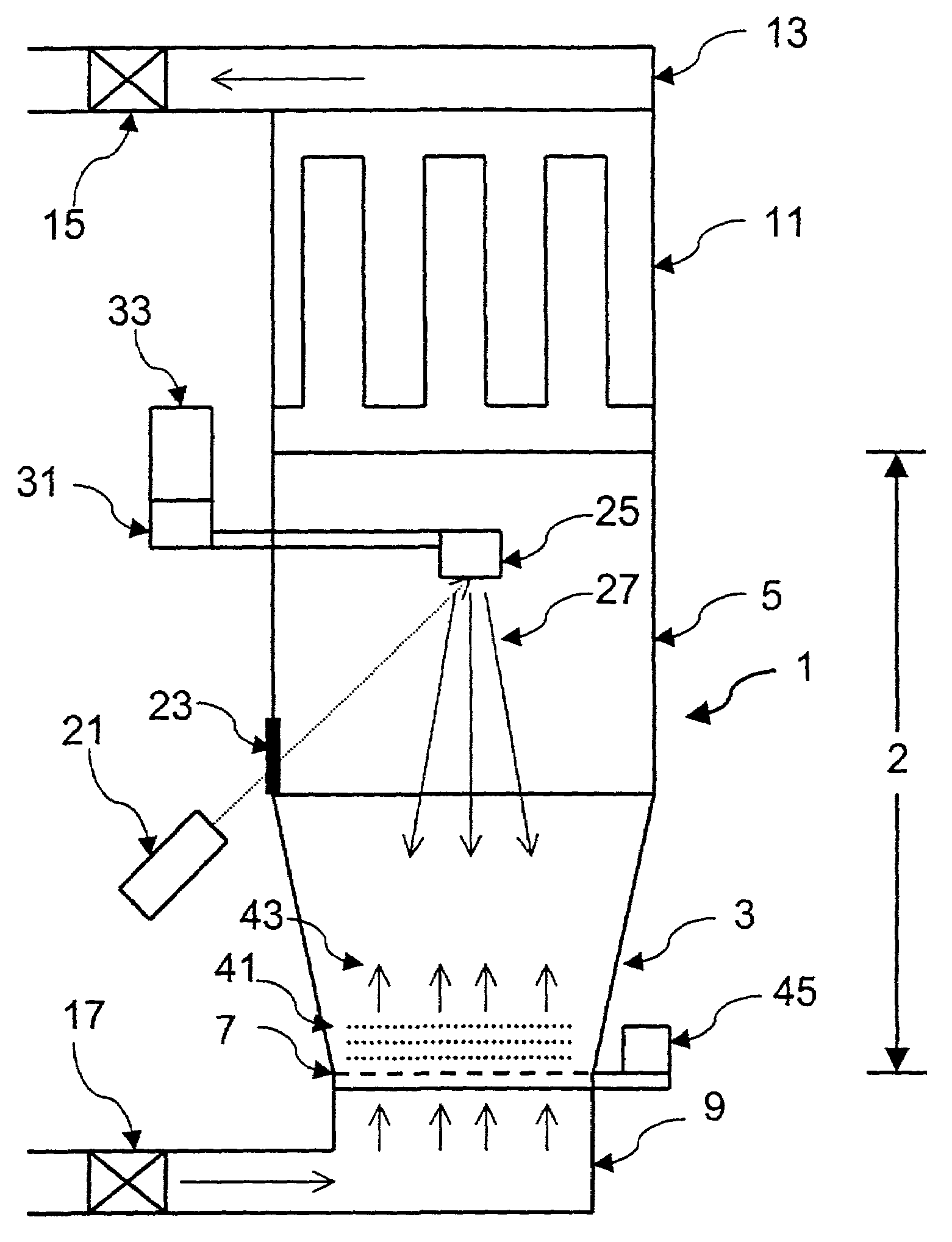Methods for coating particles and particles produced thereby
a technology of coating particles and particles, which is applied in the field of coating particles and the particles produced thereby, can solve the problems of reproducible manufacturing, long and difficult multi-stage scale-up from laboratory to commercial-scale production of formulations, and specialized equipment and expensive solvents, so as to reduce production costs and scale-up difficulty, and improve production times
- Summary
- Abstract
- Description
- Claims
- Application Information
AI Technical Summary
Benefits of technology
Problems solved by technology
Method used
Image
Examples
example 1
[0160]Triamcinolone acetonide (TA) was coated with a solid PLGA target for various times under low fluidization. Films were deposited onto glass slides before powder runs to characterize the deposited film material.
[0161]PLGA was deposited onto copper TEM grids at atmospheric pressure and a Joel 200 TEM was used to observe nanoparticle size and composition. The results are shown in FIG. 3, which shows a transmission electron microscope (TEM) image of deposited nanoparticles film at atmospheric pressure (scale 100,000 times). FIG. 4 shows another TEM image of deposited nanoparticles film at atmospheric pressure (scale 100,000 times).
[0162]Spherical PLGA nanoparticles from 20 nanometers and below are observable at 100,000 times magnification. The particles were dispersed uniformly across the substrate after only 5 pulses from the laser at 750 mJ / cm2.
[0163]Characterization above shows the versatility of the coating process showing characterization of original PLGA, HPMC, Eudragit 4135,...
example 2
[0164]PLGA coatings on Bovine Serum Albumin (BSA) were successful in sustaining the release out to 2 to 3 hours. BSA powders were sieved and the 75 to 250 micron fraction was coated with poly(lactic-co-glycolic acid) (PLGA) for 30 minutes. Dissolution on 20 mg coated and uncoated powders were performed in triplicate in 40 ml isotonic saline in centrifuge tubes on a rotating tumbler at room temperature. Filtered samples were collected at different time points up to 12 hours and analyzed using the Biocinchoninic Acid (BCA) protein assay in a 96-well plate and plate-reader at 568 nm. The results are presented in FIG. 11.
example 3
[0165]Another accepted material used in oral tablet dosage forms is the different celluloses, such as hydroxy-propyl-methyl-cellulose (HPMC). Coatings of HPMC were deposited on flat glass slides for characterization and then onto micronized TA powders for 30 minutes. FIG. 12 shows proton NMR spectra of the original HPMC and HPMC deposited at 500 mJ / cm2 near atmospheric pressure (10 Torr). For HPMC, it is believed that the 3.6 ppm peak correlates to the methyl protons and the multiple peaks at 6.0 ppm for the multiple ring protons.
[0166]FIG. 13 shows dissolution test results for coated and uncoated TA powders. Coated formulations showed 80% release after 2 to 4 hours for HPMC coatings compared to 24 hours for PLGA coatings, but additionally showed improved flow properties as seen by Anderson Cascade Impaction.
PUM
| Property | Measurement | Unit |
|---|---|---|
| pressure | aaaaa | aaaaa |
| pressure | aaaaa | aaaaa |
| pressure | aaaaa | aaaaa |
Abstract
Description
Claims
Application Information
 Login to View More
Login to View More - R&D
- Intellectual Property
- Life Sciences
- Materials
- Tech Scout
- Unparalleled Data Quality
- Higher Quality Content
- 60% Fewer Hallucinations
Browse by: Latest US Patents, China's latest patents, Technical Efficacy Thesaurus, Application Domain, Technology Topic, Popular Technical Reports.
© 2025 PatSnap. All rights reserved.Legal|Privacy policy|Modern Slavery Act Transparency Statement|Sitemap|About US| Contact US: help@patsnap.com



